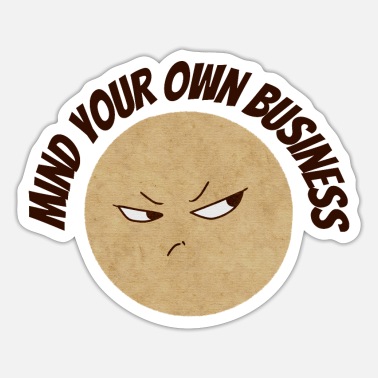Children feel more comfortable when they are at home than when they are at daycare, school, or at the park and while you want your kids to be at ease where they lay their head at night, it is also important to note that there are many dangers lurking for little ones all around this place where we hang our heart. Safety-proofing each room of the home is important to do even before the arrival of a baby, and as kids get older, different measures should be taken to ensure that they’re clear of danger when enjoying life at home.
Every room inside of your house poses safety risks for your child. It is imperative that you cover each room in your home, looking for potential safety dangers. Get on your hands and knees and remember to think like a child when looking for the often overlooked dangers. Never underestimate what children will see, find, or think of when childproofing the home.

Bathroom & Kitchen Safety
The bathroom and kitchen are two of the most dangerous rooms inside of your home. The following tips are designed to help you prevent injury and accident to your child.
-
- All knives and scissors should be kept inside of a drawer that contains a child-proof latch if there are small children in your home.
-
- If there is a dishwasher in your home, a safety latch installed here is also ideal.
-
- The use of stove guards is recommended. These guards place a barrier between hot burners and tiny fingers, reducing the risk of injury and burn.
-
- Oftentimes parents fail to realize the dangers lurking with the kitchen garbage can. Don’t be one of those parents because the dangers are very real. Place the can inside of a locked safety receptacle or use another type of latch to keep it secure.
-
- Unplug appliances when they’re not in use and keep all cords tucked into the appliance.
-
- Use a high chair with a belt and always strap your little one in, even if they’re going to be sitting for a few minutes. Accidents happen unexpectedly and within seconds an unstrapped baby or toddler can climb out of the chair and fall, climb on top of the stove or other objects, or otherwise harm himself. Don’t take that risk.
-
- Teach your child that the stove is hot and not to touch it!
-
- Set the hot water heater to a temperature no greater than 120 degrees C to prevent accidental burns.
-
- Use latches on drawers and cabinets to keep little fingers out.
-
- Install a toilet lock onto the lid of your unit.
-
- Keep all beauty items, cleaning products, and appliances inside of a latched cabinet.
-
- These items can be very dangerous to a child.
-
- Ensure that electrical outlets that aren’t in use are covered with safety plugs.
-
- Make sure that there are working smoke detectors inside of the kitchen (and each room of the house.)
-
- Install a carbon monoxide detector inside of your home. This odorless gas is deadly, but a monitor can alert you in time to get out and prevent injury.
Poisoning
The Center for Disease Control reports that poisoning is one of the leading causes of injury to children. Many items considered to be a poison exist inside of the home. This includes the common household cleaners, laundry soap, prescription and non-prescription medications, insect repellents, pesticides, and many others. These items should be kept inside of a locked cabinet inaccessible to children at all times.
Additionally it is important that you’re aware of the signs of poisoning, which include:
Child alerts you to the fact they ingested a poison or you see it happening
-
- Seizures
-
- Drowsiness
-
- Confusion
-
- Burns/redness around the mouth/lips
-
- Vomiting
-
- Trouble breathing
If you suspect that your child has been poisoned call 9-1-1 or the Poison Control Help Line at 1- 800-222-1212. This is another important number to keep posted on the phone with other emergency numbers. Better yet, why not memorize it since the digits are so simple to remember?
Toy Safety
From blocks and action figures to baby dolls and books and everything in between, toys are a fun part of growing up that every child enjoys having. But, toys can be dangerous, especially if you’re unaware of the dangers that exist. More than 188,000 children were injured in 2011 with toy-related injuries. Don’t allow your child to fill the number of these statistics and think toy safety at all times!
The Consumer Product Safety Commission regulates all of the toys that are sold in the U.S.A. They also provide important information about toy safety issues and recalls. You can also visit their website to request informational brochures and guides, posters, and other safety-related toy information.
To secure toy safety, the following tips should be implemented.
-
- All toys sold new at toy stores have age ranges listed on the packaging. These age ranges aren’t in place to say that your baby or child isn’t smart enough to do it, but instead that your child is not old enough due to hazardous or dangerous parts and pieces. Heed the guidelines and allow your kids to play only with age appropriate toys.
-
- Check toys regularly to look for missing parts or damage that may pose risk to your little one.
-
- Clean and sanitize toys at least once each week.
-
- Store toys in a toy bin or box and keep them out of the floor so no one trips and falls!
-
- Balloons pose choking hazards to babies and small children. Keep them out of their reach at all times, whether inflated or not.
Children should never put toys in their mouth.
General Home Safety Tips
-
- Create safety plans with your children and sit down to discuss the information included on the plans. Your safety plans should include emergency evacuation technique,
-
- Learn first-aid and CPR! It may save your child’s life.
-
- Teach your children how to dial 9-1-1. They should also know their address, name, and telephone number.
-
- Keep guns locked inside of a gun cabinet at all times! Never lay a gun down around a child with the safety latch off, even for a split second.
-
- What will you do in the event a fire breaks out inside of your home? It is beneficial to have an overhead sprinkler system installed in your home to minimize fire and its damage. A fire detector can also benefit you in the event of a fire.
-
- Always supervise your children and what they are doing around the house. When your children are well-supervised, the risk of injury is greatly reduced.
-
- Use baby safety gates to prevent entrance into other rooms of the house and to block off stairs. Children are fascinated by stairs, but they’re also very dangerous when they become an inside playground!
-
- Keep a first-aid emergency kit in an easily accessible area of your home.
-
- Keep a list of important emergency numbers on the refrigerator, by the house telephone, and inside of a cabinet or kitchen drawer.
- Consider hiring a professional to perform a home safety check. Although there is a small fee for this service, having an expert eye investigate any potential dangers in your home provides peace of mind that you cannot gain completing the task on your own.
Discover more from Personal Blog of Richard Tong
Subscribe to get the latest posts sent to your email.




